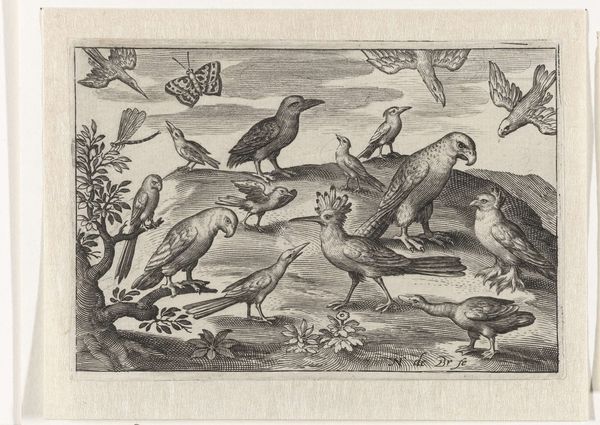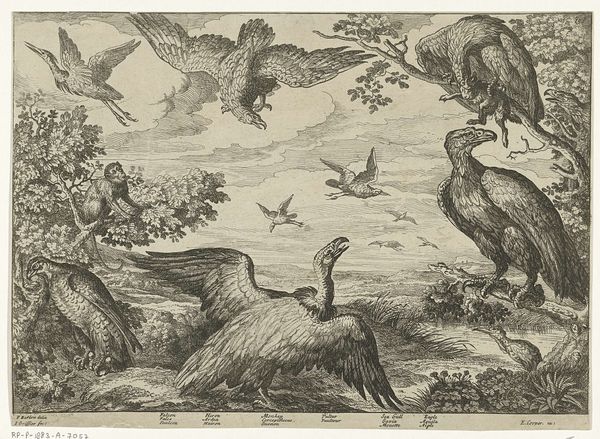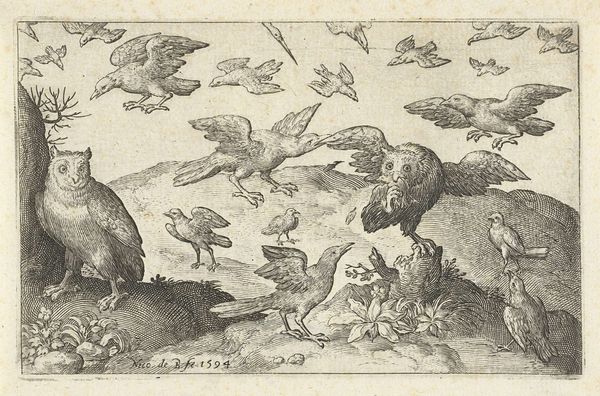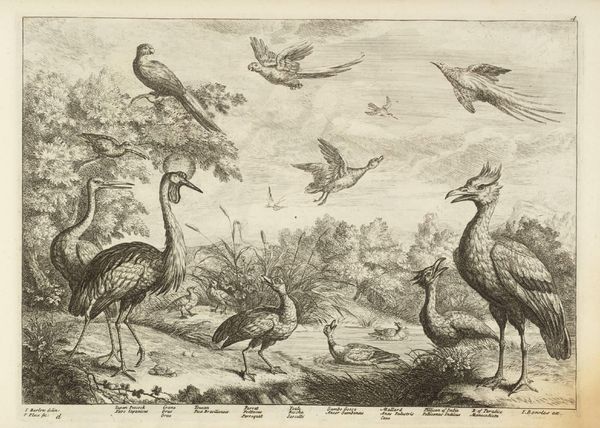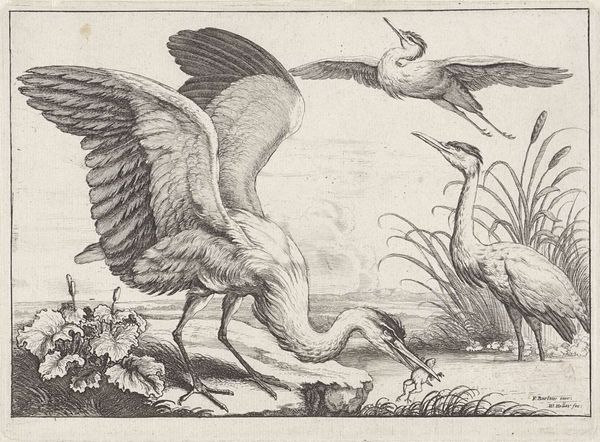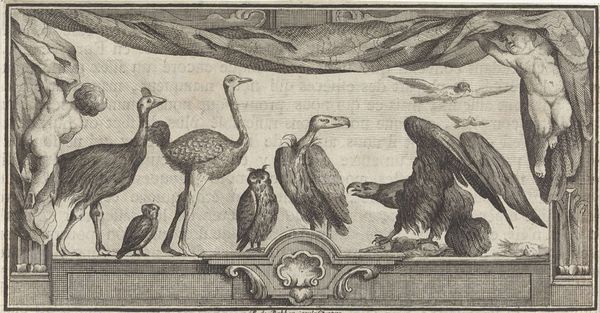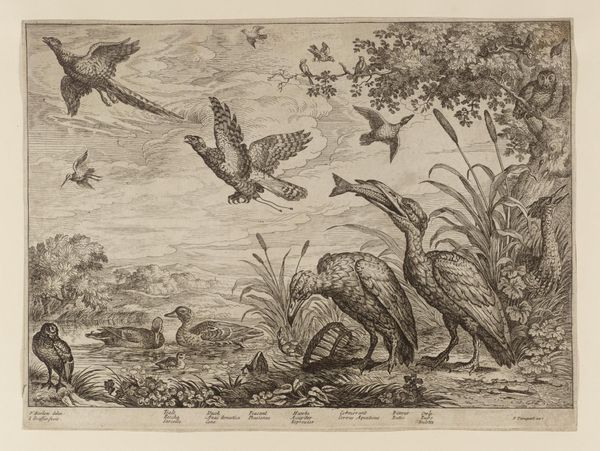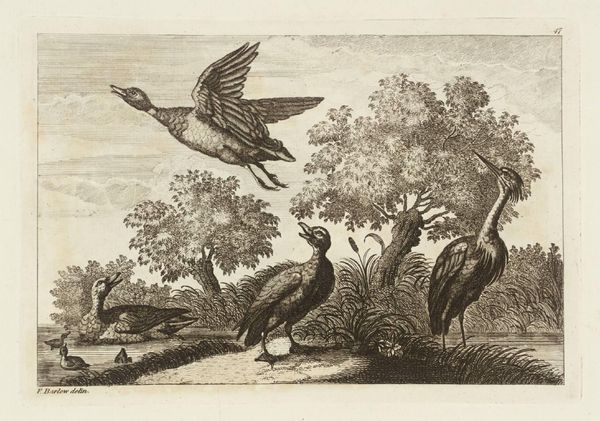
print, etching, engraving
# print
#
etching
#
11_renaissance
#
engraving
Dimensions: height 89 mm, width 130 mm
Copyright: Rijks Museum: Open Domain
Editor: Check out this engraving, "Hoopoe and Other Birds," made by Nicolaes de Bruyn around 1594. There are all sorts of birds crammed into this little scene, some perched, some in flight. I find the composition a bit odd; it's like a collection of specimens rather than a natural landscape. What's your take on it? Curator: It is fascinating how these "specimens", as you call them, speak volumes about the cultural context of the time. Consider the rise of natural history and scientific illustration in the late 16th century. Do you think this print served primarily an artistic or an educational purpose? Editor: I guess it could be both. Maybe it was meant for a collector's cabinet or to illustrate a book? Curator: Precisely! These images helped shape public understanding and perception of the natural world. Etchings like these often circulated among scholars and the wealthy elite, contributing to the construction of scientific knowledge and status. And observe how the artist has organized the animals. Does the placement or style tell us about any power dynamics at play here? Editor: Hmm, that eagle is pretty dominant compared to the songbirds. I hadn't thought of it that way. I was stuck on thinking it's a sort of Renaissance bestiary catalog. Curator: Indeed, but a bestiary for whom, and to what end? By examining the networks through which prints like this circulated, and the social values they embodied, we gain insight into the public role of art. Also how socio-political structures influenced art at the time, it's pretty neat, isn't it? Editor: It is really interesting to look at art this way, instead of just thinking about artistic style or who the artist was. Curator: I'm glad that you've enjoyed our journey of discovery! Looking at artworks through history really shows how important they can be!
Comments
No comments
Be the first to comment and join the conversation on the ultimate creative platform.

